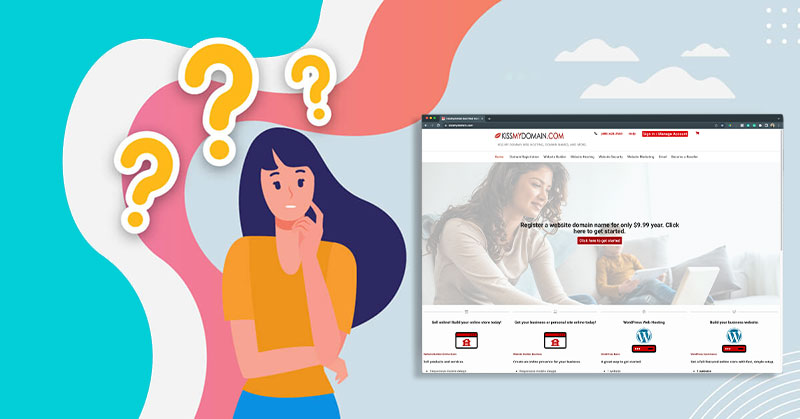WordPress web hosting provided by KissMyDomain.com powers this website

Getting started with the web design process.
One of the hardest things for a web designer is to make sure they can ask their client all the right questions during the meeting/planning stage of a website design. This is a very common problem that most web designers face, and although it can be very difficult to generate the right questions to ask your client, rest assured that as time goes on and you have dealt with a few clients, your list of questions will begin to develop. I have compiled a list of common questions below to help make the web design process easier for you.
Keep in mind that as you develop your list of questions, gathering the right information will help you in the long run with the design process. Get as many of the following questions answered, and 85% of the design battle is already done because you will already know what needs to go on the page and where to place it.
Just giving you the questions isn’t enough because you need to understand why the questions are asked. For this reason, I have also included example options for the more in-depth questions so you can see why the question is important and what kind of answer you’re looking for. Remember that getting all the right answers is crucial because having all of the necessary questions answered, the page will pretty much build itself!
One more tip before you read the following questions; rather than taking your laptop into your meeting with your client, keep it simple and use the old pen and paper method. This will allow you to make quick notes, avoid interruptions from your computer, and give your full undivided attention to your client.
Are you building a Website? Here are some questions to ask.
- What do you want the website to do for your company? (is it to promote brand awareness and for people who hear about them and then go to their site? Will people be finding them through search engines? Is it existing clients looking for support or news? Are you selling online? Are you offering downloads, company reports, etc.)
- Who is your target audience (age/level of internet experience etc)? (Do they require a modern, fast-paced, highly graphical site to target the younger generation or a more user-friendly site for the less experienced or older internet users? )
- What image do you want to portray (Professional / Casual / cutting edge etc.)? (Some sites use white space and limited text to give a relaxed feel, while others use lots of images and text to give the site a busy feel. Define the feel of the site)
- What colors, fonts, and styles do you use if you have branding? (See business cards, letterheads, etc.). More often than not, the sole trader will have no graphics, no logo, and no identity, so in these cases, you need to ask the client for color schemes they think they fit with the ideas but also do market research on the competition because the client may not be right.
WEB DESIGN CORE QUESTIONS:
- What do you want on the site? (This list could include a blog, shopping cart, members login, private areas, and RSS feeds. Gallery newsletter, contact forms, advertising space, different languages, search facility, etc.)
- What would you like, if possible/within budget?
- What absolutely must be on the homepage, and what is the order of priority? (This is a core question; you should allow the client time to ponder and discuss this with you. Their answers here should define the position of the building blocks. The answers could be phone number, email, a help icon, downloads, cart total, core product links, etc.)
- What must be visible at all times? (Every page has a fold. A fold below the visible part of the page requires you to scroll down to see it. I have a height I use, but you should decide where it should be. The client must understand this and agree on what can go above and below).
- How many links will be needed, and how many levels of navigation will there be? (You need to understand the journey paths and decide how far down the link structure will go (level one, level two, level three, etc.)
- If the business has different sections, and each wants its presence on the page, which sections would get the best locations?
- Is there any content that may require a database or scripting? (Contact forms, shopping carts, newsletters, etc.)
- Who are your competitors? (Supply some URLs of competitors that you think to sell your product type well)
- Do your competitors use something on their site that you really like? (Could be navigation structure, form layout, etc.)
- What do you offer that the competition doesn’t? (This often makes the client think about his own business in a new way, and I’ve started a new path for a few businesses with this one!)
- List five general sites that they like and why they like them. (This could be navigation method, color scheme, fonts, etc.)
- Do you have any text/copy/graphics / Logos for the site? Will they be supplying the text in a ready-to-go copy/paste format, or will someone have to input all their text into the site from paper, etc.? Likewise, will we need to outsource all the imagery from other sources, or do they have graphics that need to be included? Will we need to input all the links?
- Will you require space on pages for external/internal advertising (If yes, what types)? Header ads, sidebar ads, ads in the content, etc.
- When do you want it finished, and who will update the pages?
- What is their level of experience?
- What are your main products and services? For each, explain what you would want your visitors to do (sign-up, purchase, contact you, etc.). i.e., a call-to-action for each.
- What are the main categories of information you want to publish? (Time-sensitive like news & events? Product or service descriptions? Case studies / Success Stories? Careers information? Special offers?)
- How would you like to communicate with your visitors? (Telephone, Email, Live Chat, Blog or discussions, Mailing list, Brochure/magazines)
Shopping Cart questions
- Do you want to offer real-time shipping?
- Do you want the consumer to sign in or log in?
- Do you need cross-selling?
- Do you need to offer unlimited products?
- Do you need unlimited categories?
- How will you charge for shipping?
- How will you charge collecting taxes on orders?
Blog’s
- Will there be multiple authors?
- Should the site be displaying author info?
- Are there multiple styles of blog posts, like longer feature posts and shorter quick posts?
- What other kind of content will be on the site?
- Does the site need to accommodate advertising?
- (What type? Sizes? )
- Do you plan to use categories? Tags? Both?
- How do you want to handle archives?
- How do you want to handle the search?
- Are you going to be presenting source code in the posts?
- Are there any other blogs that you like?
Content Management Systems
- Do you require multiple levels of access?
- Does the new content need final approval before being published?
- Will they want simple content editors or web developers to change styles?
I have the website built…now what?
I usually start with scribbles on a napkin or pad. Seriously if you start sketching out as the client is answering your questions, you quickly get a feel for the blocks, and usually, when I leave the client, I already have sketched out where the blocks need to go.
Once the client agrees with the position and prominence of the blocks, I can start thinking of the graphics. This is where your preferred way of building a site comes into play, but the difference between how you did it before and now is you have the building blocks in front of you, and with the answers to your questions beside you, it should be a much simpler process than ever before.
The visual wireframe should include the effects on the page. For example, if your navigation has a mouse, then have that mouse over on “one” of the links, likewise for active stats, etc. If the effect is transitional, try to give an example web page with it working or give a detailed description.
The visual wireframe may be overboard for some of you, but for me, it is easier to modify a PDF than a pixel-perfect web page. A client can often try and change the layout after looking at it for a while, and while I’m in the PSD stage, I’m happy to accommodate this. Once the visual wire frame has been agreed upon, the build begins, and any changes after that point will incur costs. The client can’t argue because they have already agreed to the block and visual wireframes, so it is a lot easier to ask for extra costs when you’re at the final stage of the contract.
I wish I had this list when I first started, and I hope my years of building and updating this document help you.
WordPress web hosting provided by KissMyDomain.com powers this website




